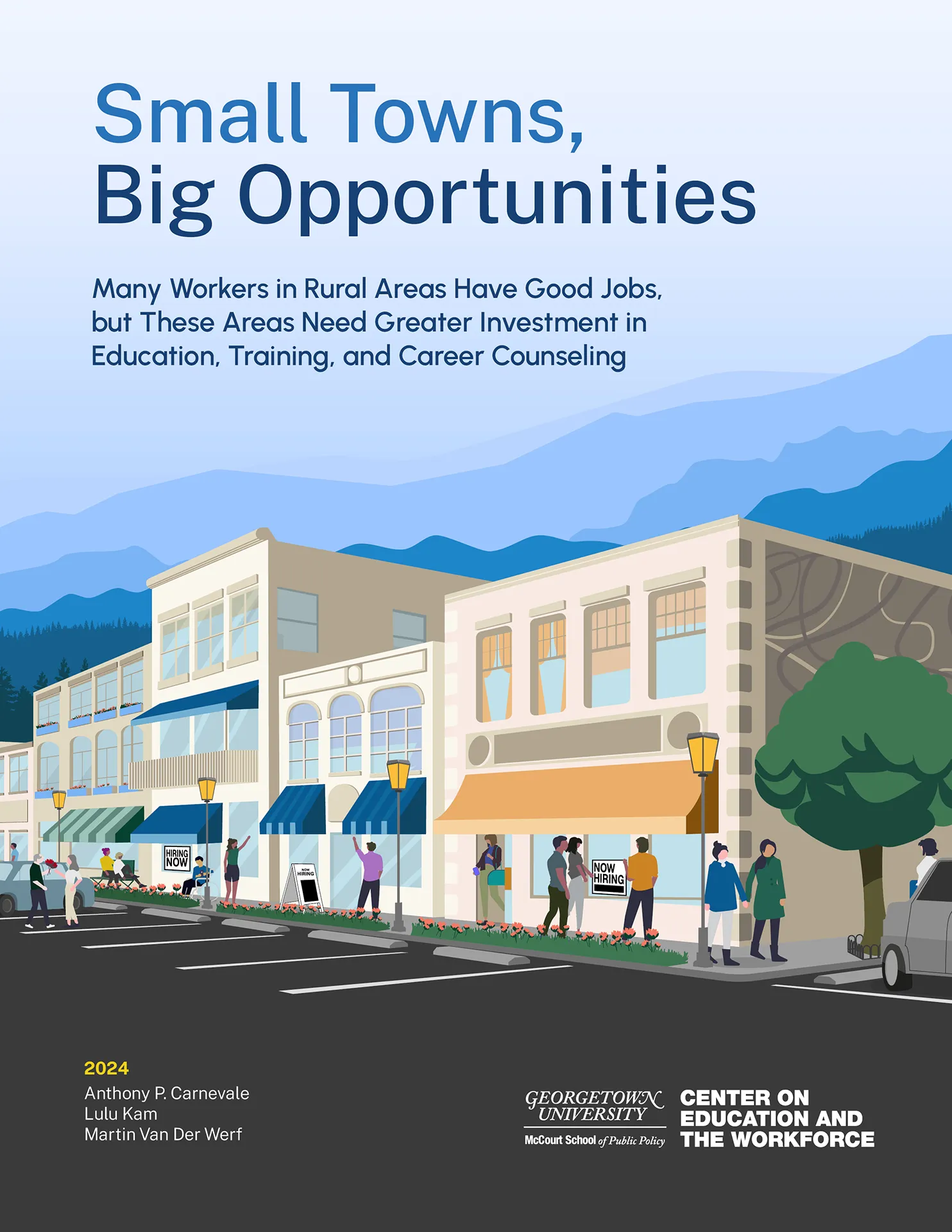Summary
Rural America has long been perceived as “left behind” by policies that leave it struggling while benefiting bustling urban cities and suburbs. That narrative holds some truth: rural America has a declining population, along with lower educational attainment and lower workforce participation than urban America. But while rural America certainly faces challenges, it also has its own strengths and assets.
Small Towns, Big Opportunities: Many Workers in Rural Areas Have Good Jobs, but These Areas Need Greater Investment in Education, Training, and Career Counseling counters some of the negative stereotypes and finds that working adults in rural America are almost as likely (50 percent) as working adults in urban America (54 percent) to have a good job.
What Is a Good Job?
We define a good job as one that pays a minimum of approximately $43,000 to workers ages 25–44, a minimum of approximately $55,000 to workers ages 45–64, and a median of approximately $82,000 for all good jobs (in 2022 dollars). In this report, we account for differences in the cost of living between rural and urban areas when assessing whether workers have good jobs.
By using a good jobs framework, we are able to highlight both rural America’s assets and its challenges.
Rural America’s Assets
The rural workforce represents 13 percent of the total 25-to-64-year-old working population in the US and holds 12 percent, or a roughly proportionate share, of the country’s good jobs. In particular, the blue-collar economy in rural America is strong, as blue-collar occupations employ 31 percent of rural workers compared to 21 percent of urban workers. Due to this strong blue-collar economy, workers with lower levels of educational attainment fare better in rural areas than in urban areas. For example, workers with a high school diploma as their highest level of attainment hold 26 percent of good jobs in rural areas, compared to 15 percent of good jobs in urban areas.
Rural America’s Challenges
Despite rural America having a proportionate amount of good jobs, racial and gender disparities are stark. White workers hold a disproportionate share of the good jobs (86 percent) compared to their share of the rural workforce (81 percent).
In rural America, white workers are the only racial/ethnic group in which the majority of workers have good jobs.
Source: Georgetown University Center on Education and the Workforce analysis of data from the US Census Bureau, American Community Survey (ACS), 2015–19 (pooled).
Note: A good job is one that pays a minimum of approximately $43,000 for workers ages 25–44 and a minimum of approximately $55,000 for workers ages 45–64 (in 2022 dollars), adjusted for geographic differences in cost of living.
Moreover, men make up 52 percent of the rural 25-to-64-year-old workforce but hold 63 percent of the rural good jobs, while women make up 48 percent of the rural 25-to-64-year-old workforce but hold only 37 percent of the rural good jobs. Rural America also has a low bachelor’s degree attainment rate (25 percent) and a high labor-force nonparticipation rate (26 percent). Almost half of all rural adults with less than a high school diploma are not in the labor force, compared to about one-third of urban adults with the same education level.
Higher disability rates in rural areas are one factor keeping rural adults out of the labor force. Half of rural adults who are not in the labor force say it is because of illness or disability.
Source: Georgetown University Center on Education and the Workforce analysis of data from the US Census Bureau and Bureau of Labor Statistics, Current Population Survey (CPS), 2015–19 (pooled).
Note: The data include adults ages 25–64.
Recommendations
To compete on the national economic stage, rural America needs strategies that help combat racial and gender inequality while simultaneously
- building rural human capital,
- utilizing existing human capital, and
- stimulating rural economic growth.
Resources
Small Towns, Big Opportunities: Many Workers in Rural Areas Have Good Jobs, but These Areas Need Greater Investment in Education, Training, and Career Counseling finds that 7.4 million workers ages 25–64 in rural America have good jobs paying at least middle-class wages.
Overview of the likelihood of holding a good job for demographic groups in rural areas in all states with rural counties (all the counties in Delaware, New Jersey, and Rhode Island are classified as urban in federal statistics).

